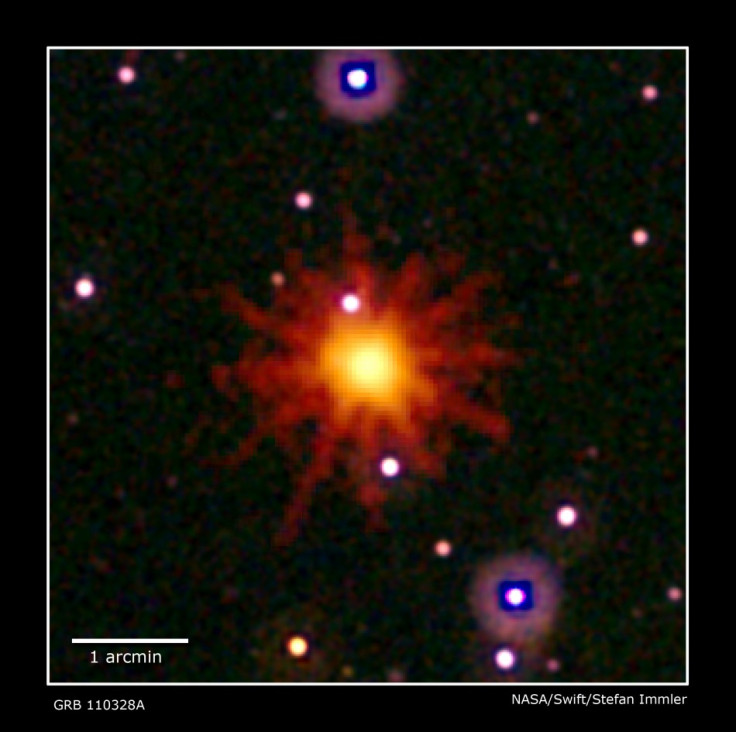Gamma Ray Bursts May Help Solve Dark Matter Puzzle

A team of scientists are using measurements of gamma ray emissions from the most distant massive explosions in the universe to try and better understand dark energy, the invisible force behind the universe's accelerating expansion.
Gamma-ray bursts are used to measure the largest distances in the universe. Astrophysicists are using the new technique to understand which model best describes the nature of dark matter by allowing variations in its density to be measured.
It is thought that the longest bursts were emitted after the core of a large star collapsed to form a black hole, with radiation being so powerful that explosions can be observed as far back as 400 million years after the big bang.
The team of researchers analysed previous gamma explosions and discovered some could be calibrated using different methods, such as Type Ia supernovae, to measure the total energy of the explosion.
"We are able to determine the distance of an explosion on the basis of the properties of the radiation emitted during gamma-ray bursts," said Marek Demianski of Poland's University of Warsaw in a press release.
"Given that some of these explosions are related to the most remote objects in space that we know about, we are able, for the first time, to assess the speed of space-time expansion even in the relatively early periods after the big bang, " he also added.
Albert Einstein initially came up with the concept of dark energy, which was described as a constant force that opposes gravity and prevents the universe from collapsing.
Later on, Einstein said his idea had been a huge mistake.
But in 1998, analysis of Type Ia supernovae's brightness surprised scientists by being fainter than expected, leading them to say that the lengthier than expected distance had been caused by the acceleration of the universe expansion.
Dark energy was therefore proposed to reconcile these observations.
"Overnight, dark energy became, quite literally, the greatest mystery of the universe," Demianski said.
There are currently only two models used to investigate dark matter, the first one is based on Albert Einstein's theory, and the second advances that accelerated expansion is due to an unknown scalar field.
"In other words, it is either-or: either space-time expands by itself or is expanded by a scalar physical field inside it," Demianski explained.
If the density of dark energy has remained constant, it is linked with the cosmological constant, the property of space-time.
On the other hand, if a scalar field is responsible, dark energy's density would change as space-time expands.
The study shows statistical associations between an explosion's total energy and its gamma radiation. Although extremely remote bursts are fairly rare, the researchers say they have developed a tool to test hypotheses of the universe's structure.
"All we need to do now is wait for the next cosmic fireworks," Demianski said.
© Copyright IBTimes 2025. All rights reserved.




















